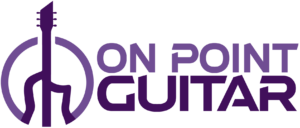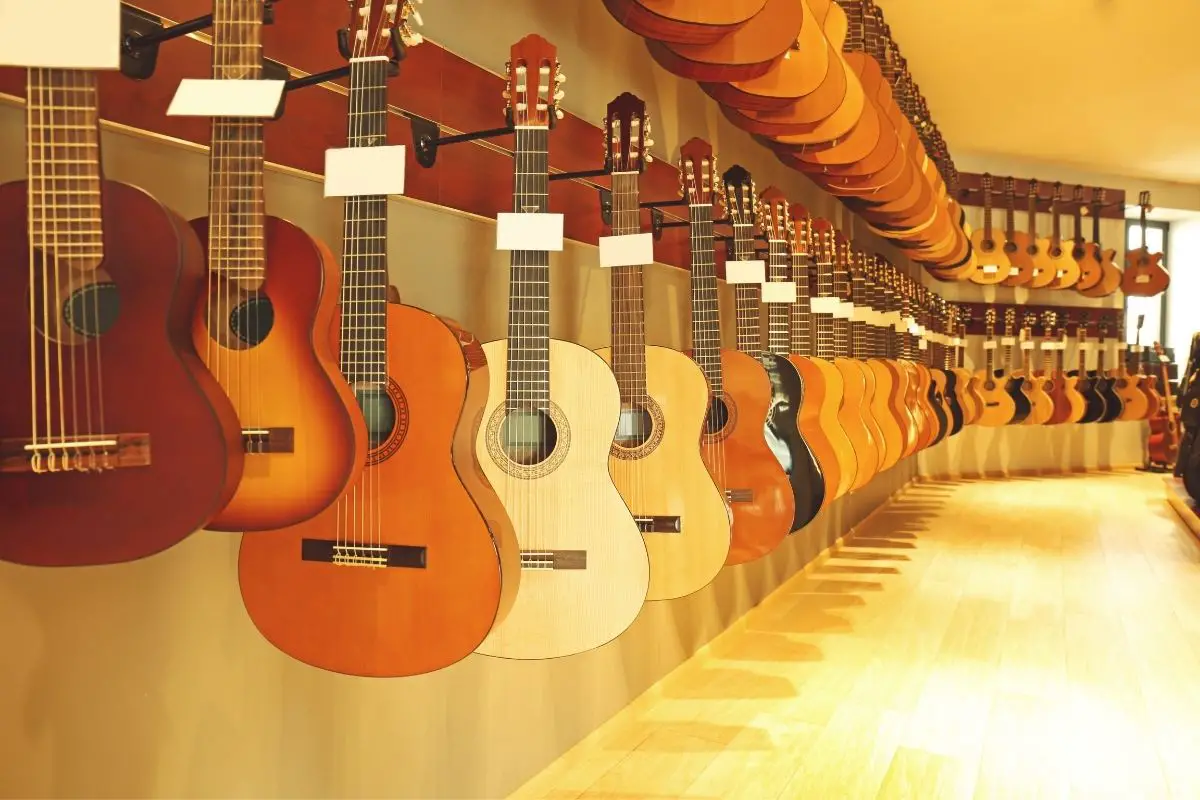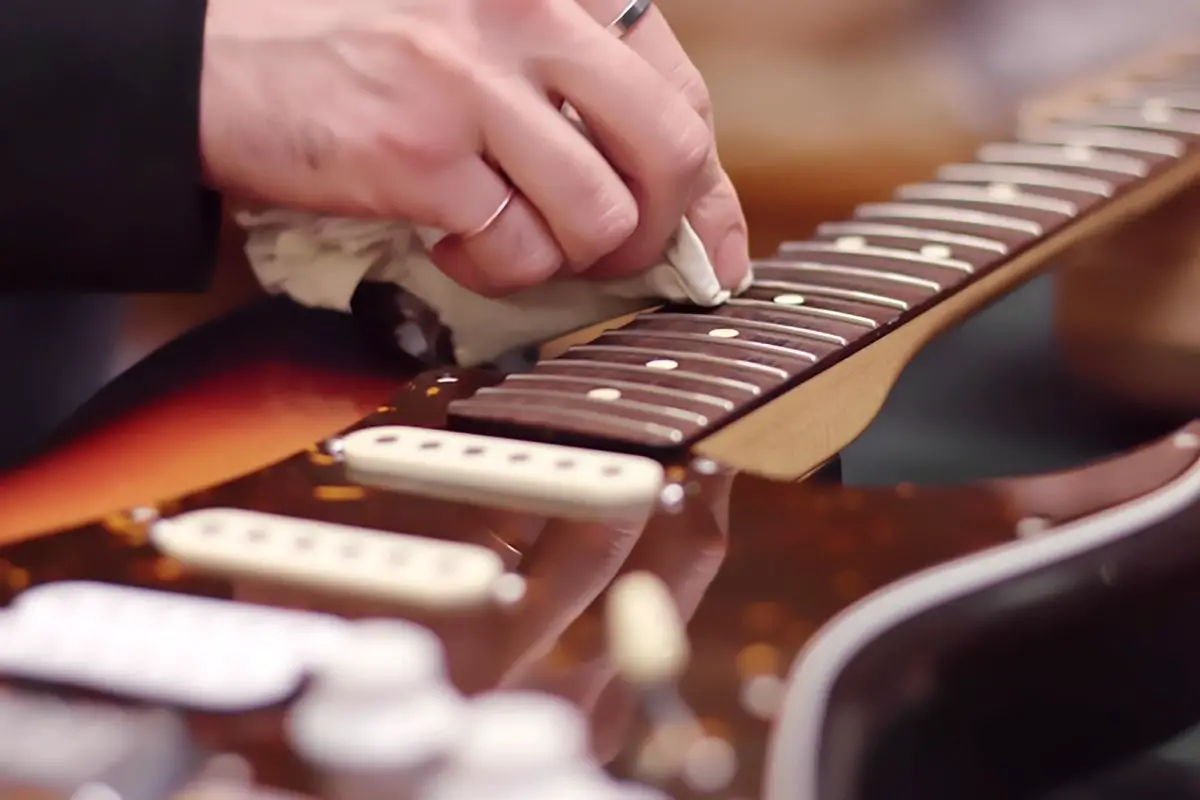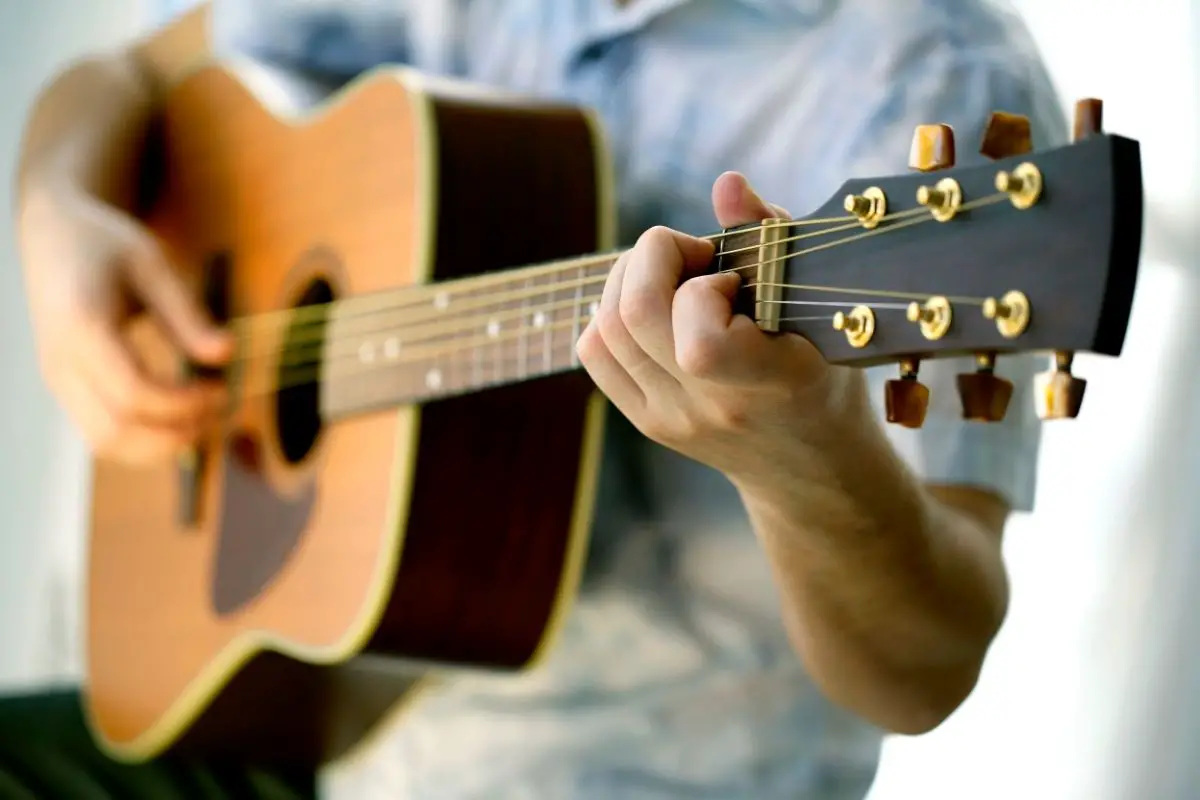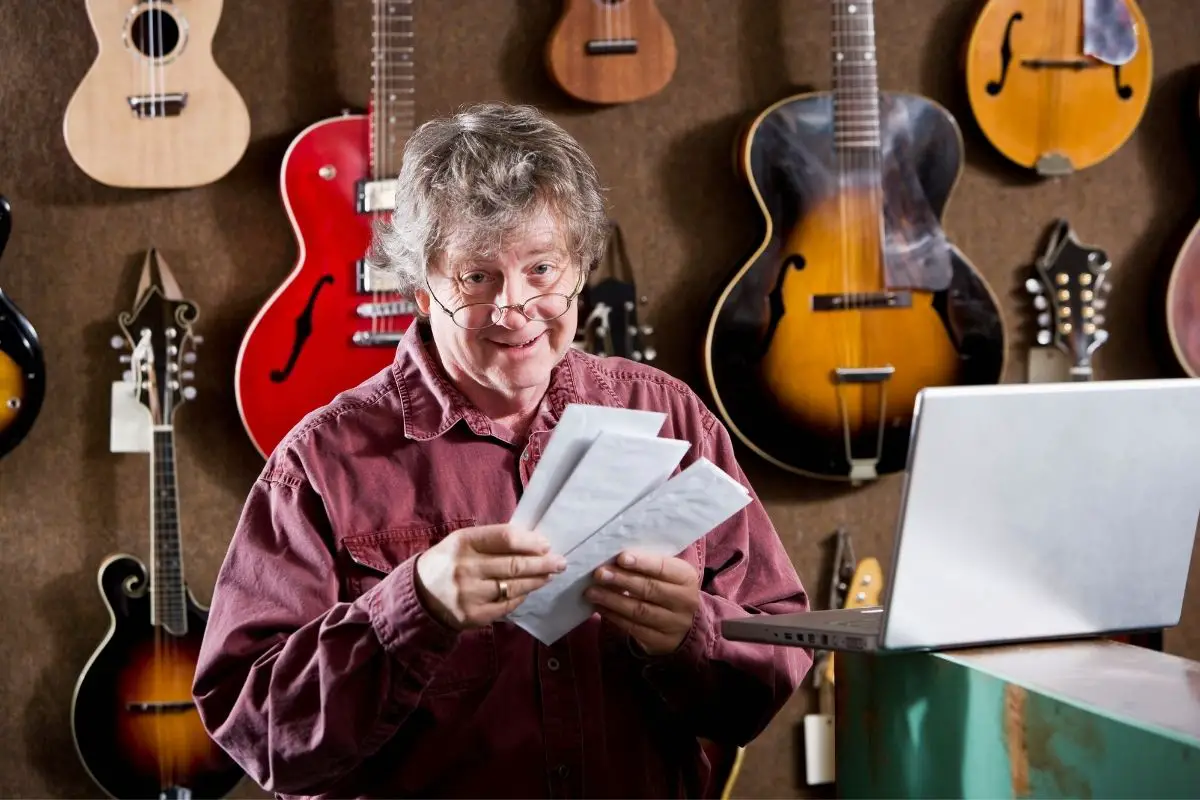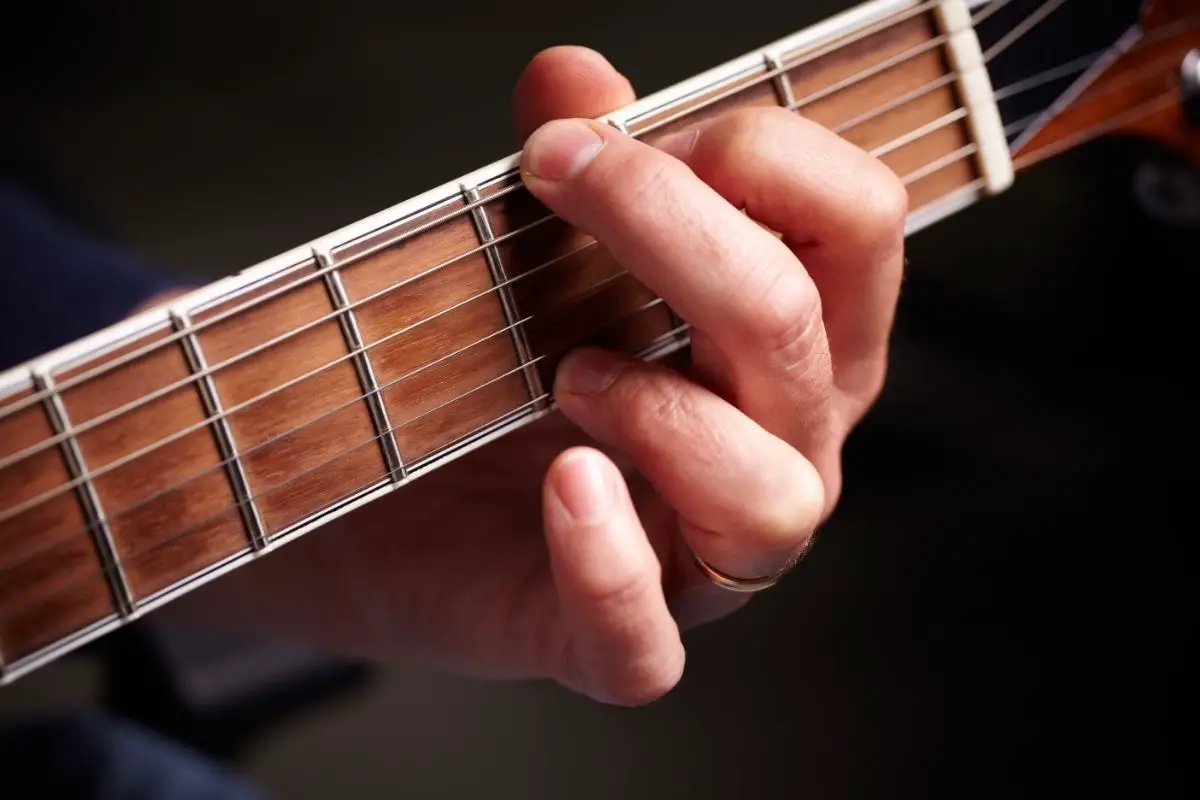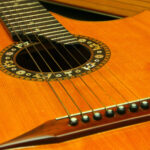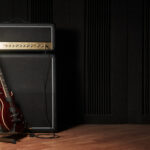How would you describe the G Major Pentatonic Scale Guitar? What does it sound like? Is it useful?
The G Major Scale is the foundation of music theory. It’s also known as the Natural Minor Scale because it’s built from the notes C D E F G A B C. This scale has been around since ancient times and was even used by Pythagoras.

The G Major Scale is the basis of Western music theory. It’s also called the Natural Minor Scale because its notes are derived from the natural minor scale (C D E F G A B).
There are seven notes in the C major scale: 1-2-3-4-5-6-7. You should know how to play them by now. In case you’re wondering, the first note in the scale is the tonic (C).
This input shows how to play the G major scale. Use this diagram to learn how to play the G Major Scale. You can also see that white dots represent open strings.
There are seven different notes on the scale: A, Bb, C, D, E, F, G. The first note is always repeated at the end, an octave higher.
In the example above, the last note is the G. Each note has its own specific place within the scale. For instance, C is the 4 degree of the scale, while F is the 7 degree.
Scales are helpful ways to practice guitar chords and improve dexterity. Scales are useful for developing your musical ear and understanding how to play the guitar.
For those who want to expand their scale horizon, there is a wide range of scales available on the Fender Tune App. There are also many videos offering step-by-step tutorials on how to play each scale.
Guitarists practice scales over and over again because they know that this will help them play better. Improvisation is another skill that separates professionals from amateurs.
Knowing what chords fit well together and knowing when to use different notes will make you a better player.
To get to this level, you’ll need to form a sort of practice regimen that includes practicing the same scale on the fretboard over and over again.
You’ll also need to learn how to read chords and tabs. Finally, you should know about the different fingerings for each scale shape and be able to recognize them when you see them.
Notes of G Major Pentatonic Scale Guitar
The G major pentatonic scale comprises 5 notes, like all other pentatonic scales. These are;
G • A • B • D • E
One of the major differences is that the G major pentatonic scale does not contain flats or sharps. All its notes are in natural form. As such, it gives out a bright tone, as is heard in songs. Like Wish You Were Here by Pink Floyd and Sweet Home Alabama by Lynyrd Skynyrd.
Scale Formula
The G major pentatonic scale formula is simple to get used to. Its formation is 1 – 2 – 3 – 5 – 6
| Intervals | Root | Major 2nd | Major 3rd | Perfect 5th | Major 6th |
| Notes | G | A | B | D | E |
Scale Positions
There are several ways to play the G major pentatonic scale, open position and 5 caged positions.
In the Open Position, the middle finger starts on the 3rd fret of the low E string. As you progress through the other notes in the scale. Your index finger will be on the 2nd fret of the next 3 strings. With your middle finger play the 3rd fret of the last 2 strings, the B and the high E strings.
The 5 caged positions comprise;
- 2nd position – lowest fret is 2
- 4th position – lowest fret is 4
- 7th position – lowest fret is 7
- 9th position – lowest fret is 9
- 12th position – lowest fret is 12
The G Style Major Scale – General Knowledge And Notes
There are seven notes in the major scale: G D C F A B E. You may notice that E minor is made up of the same note names as the G major scale, but with a different starting position.
This similarity means that E minor is called the relative minor of G Major. Now, let’s go over the different positions and fingering needed to play the G major chord.
Guitar scales are represented by fretboard diagrams. Fretboard diagrams are used to learn the correct finger placements. Open strings are indicated as white dots.
The G scale is the most important scale in music. It is used throughout the entire music world. You’ll be using the G Major scale over and over again when playing songs.
The first chord we need to form is an E minor 7th chord. This chord uses the notes F, C, D, and G. We can see this by looking at the scale degrees of the notes we want to use.
In order to form this chord, we’ll start with the note F (the 4th degree) then go up to the 5th degree (C), down to the 3rd degree (D), and finally back to the 2nd degree (G). So we end up with F-C-D-G. Now we add another note to this chord.
To do this we take the note Bb (the 6th degree) and go up to the 7th degree (Eb), down to the 5th degree(Ab), down to the 3rd degree (Db), and finally back to our original note.
The G Major Scale, With Its Minor Scale: Being E Minor
For each type of major scale, there is a relative minor scale using the same keys but with a different root note.
The G Major is an example of this: the G scale starts on the key of C, while the E Minor scale starts on the key of F. The E minor type of scale uses the same notes as the G scale. Learn to play both scales using the same techniques.
G Major Scale On Guitar
Chords are used in many ways in music. This lesson shows you some of the most popular ones. You’ll learn what each chord means, and how they’re built.
The F diminished chord is a bit different from the other chords we’ve learned so far. It contains two notes instead of one. Practice playing the F Diminished Chord by strumming the G Major Scale.
Then, go slow at first and strum each chord 4x before changing to another chord. This will help you learn how to switch between chords more easily.
The G major style scale is rather easy to remember actually since it just contains one sharp. The notes of the g major scale go:
G, A, C, B, D, E, and F#.
Even if a person doesn’t know exactly how to read musical notation, if he or she sees a keys’ signature that has only 1 sharp, then the music itself is in G major. The notes for the E Minor are:
E F G B A C D.
From this, we can see, the E minor scale begins on ‘e’ and the G major scale itself starts on ‘g’. However, both of the scales contain the same 7 individual notes.
The key thing to remember with G Major is that F sharp is used instead of F. All other notes are roughly natural. So, if you know C Major, then you already know how to play the G Major scale. To make this easier, make sure to raise the F sharp by exactly one fret.
This is the open major scale. There are seven different types of scales based on the number of sharps or flats in them. Open major scales contain no sharps or flats.
A major scale contains five intervals (one-half step, two whole steps, three half steps, four whole steps). An augmented scale contains six intervals (two half steps, three entire steps, four half steps, five full steps).
A major scale is a set of seven notes used to create melodies. Each note on a major scale has an equal distance from the previous note and the next note.
The first note of a major scale is called the tonic. There are many ways to play a major scale. In this lesson, we’ll be using the C Major Scale.
Memorize the notes on the guitar fretboard, one string at a time. Play each note as many times as possible before moving on to the next string. Practice until you can play every note without looking at your sheet music.
First Position
To play the G major scale properly, you should use your index finger to press the note on the first string, your middle finger to press the note next to the first, your ring finger to press the note after the first, and your pinkie to press the note after that.
Second Position
To play the G major scale, you must first know how many frets there are. Then, you must know what note is played on each fret. Finally, you must memorize the order of each note.
Fifth Position
To play the G major scale, start with your index fingers on the fourth fret, middle finger on the fifth, ring finger on the sixth, and pinkie on the seventh string.
You’ll need to move your hands around to play this scale on the B and high E strings. Use your index finger on the 5th fret, middle finger on the 6th, ring finger on the 7th, and pinkie on the 8th.
Ninth Position
You should use your index finger on the 9th fret, your middle finger 10th fret, your ring finger 11th fret, and your pinkie 12th fret. To reach the note on the 13th fret you must move your hand up slightly then move it back down.
Twelfth Position
Finally, to play the scale of G Major in 12th Position, you’ll need to shift your hand a little, so you can use your index finger to play notes on both the 11th And 12th Frets. You’ll use your other fingers for one fret each, with your middle finger on the 13th fret, your ring finger on The 14th, and your pinkie on the 15th.
Although shifting your hand position in this way might be uncomfortable at first, It’s a great way to practice these movements and build dexterity for when you’re ready to learn more complicated pieces of music in the future.
The 5 Scales Of G Major Enclosures – CAGED System

The CAGED system is actually a great method of learning guitar chords by breaking down the frets into five different boxes. These boxes are called enclosures. Each enclosure contains a specific chord shape. Once you know how to play a particular enclosure, you can use it anywhere on your guitar.
Learning this system allows you to learn chords faster than before because you don’t have to memorize so many shapes. The five CAGED shapes are C major, G major, A major, D major, and E major.
The Very First Enclosure
The scale itself is actually based on an open-style chord shape. There are three notes that appear in the scale over and over again: G, C, D. These notes are found on the third, sixth, and first strings.
We can play two complete octaves of the chord without moving our hands. Both notes are correct, but the second one is easier to reach.
Second Enclosure
Our second may be able to be found within the 5th and 2nd frets. It is actually built around the E major chord shape. The low note is actually an F (7th degree) major triad, which is one of the major sevenths of the center.
To play efficiently, we should place our index finger exactly on that F, and then our middle finger should play all the notes that are on the third fret, our ring finger should play the third fret, and our pinky finger should play the fourth fret.
The notes in this shape cover two octaves of the major scale. The first note in the shape is at the very bottom of the guitar neck. The last note is at the top of the guitar neck.
Third Style Enclosure
The third enclosure is located between the fourth and eighth frets. The first two notes should appear only once each. The root note occurs up to twice in this exact region – the 2nd and 4th strings.
The shape covers an entire octave of our G scale. Shifting your hand backward a fret when you are changing from fifth to fourth, then shifting yourself back up exactly one fret after playing the third note on the second string.
Fourth Style Enclosure
A major scale is played over an open E minor chord. The 4th enclosure is between the 7th and roughly 8th fret. The root note here appears two times – once on the exact 5th string and once on the second string.
There is a note that appears only twice on consecutive strings. Choose whichever version sounds more appealing to you.
Fifth Style Enclosure
The pattern repeats over and over again until you reach the end of your scale. The notes appear in order starting from the bottom of your scale.
Your fingers should be positioned to hit the exact next notes in the correct order.
Connecting The 5 G Major Scale Enclosures
When learning how to play guitar, it helps to know what notes are shared by different boxes. This allows you to connect them easily, and also makes transitions easier. I’ve highlighted the areas where boxes overlap. You’ll notice that each box shares notes with other boxes.
This means that if you learn the notes on one box, you can move to another box without having to relearn everything. In this example, you can see that the C Major Scale shares notes with the E Minor Scale.
This means that if we learn the notes of the C Major Box, then we can use those notes to learn the notes of the E Minor Box.
Roman numerals are used to represent fret numbers. You can use slides, shifts, or other techniques to move between them. Connecting the enclosures requires patience and persistence.
G Major Scale In Guitar Tablature And Notation
The above guitar tab and notation show four examples of the G scale starting on different root notes. If you don’t know what any of those mean, here’s an explanation of each example:
Guitarists should practice random walking around the fretboard instead of simply playing scale runs. This helps them develop a sense of independence and creativity when playing music.
This pattern covers two octaves of the major scale. We’re using open strings as an opportunity to play the notes of the same scale. First, you’ll need to learn how to play this song on the guitar. Then, you’ll need to be able to play every single chord in order.
When you get to the part where the chords change, you’ll want to make sure that you know what chord you’re going into before you start playing. After you’ve learned how to play this song, go back and try to figure out why there are so many notes in this song.
The tab covers a full octave of G major and goes up so that it is at the highest note of G, which is the fifth of G. Practice this example descending as well.
The fifth example we will go into features a form of G major finger picking technique just before the twelfth.
This g major scale guitar tab actually covers an octave and then goes up until the fifth of the G, or the high D that is on the first string.
This is an example of a C Major chord written out and tabbed. A C Major chord consists of a root note (C), a third (E), and a fifth (G). This chord is played by strumming the first three strings of the guitar, starting on the lowest string (the 1st fret) and moving up to the highest string (the 12th fret).
You’re going to learn how to play the guitar using this method. First, you press down on the third fret of the second string with your finger. Then you use your pick to strum the strings.
Reading tabs isn’t necessarily easy, but it is a great entry point for a beginner-grade guitar player who’s looking to take his or her playing to the next level!
Tab Number One
This tablature shows you how the first CAGED shape of G major is played, both ascending and descending. You should practice playing the shape both ways because your musical idea won’t have the same directions each time.
Remember that if you want to transpose this shape into another key, you also must transpose the notes being played on open strings!
Tab Number Two
The first enclosure is based on the open G major chord shape. Start playing this enclosure with your index finger on F (6th string, 2nd fret).
This enclosure includes the notes C, D, E, F, G, A, B. Memorizing these notes is important because you’ll be using them again later.
Tab Number Three
This is an easy song to play because it uses simple patterns. The chords are played using the fingerings shown above. The song starts off with the C major scale.
Then, the A minor pentatonic scale is used to create the melody. In order to make the song more interesting, the song switches to the F Major scale.
Tab Number Four
In the first tab, you’ll learn the basic chords that make up the major scale. You’ll start by learning the C Major Scale.
Then you’ll learn how to play through the C Major Open Chord Shape using the 4 frets on the guitar neck. Finally, you’ll learn how to use the 4 frets on your guitar to practice the G Major Enclosure.
Tab Number Five
This last tab shows how to play the open chord shapes in the key of C major. This last tab shows how the open chord shape can be used as an enclosure. The first few chords are played by using the index finger and thumb. Then the rest of the fingers are added to play the next set of chords.
The chords are played by using every finger except the pinky. The pinky is used to hold down the strings while the other fingers pluck the strings.
G Major Scale Suitable Exercises
Playing scales over and over helps you to learn how to play them correctly. Metronomes are great tools for practicing scales. Scales should be played in order, starting in an open position. Listen to the difference in pitches when playing the same notes in different positions.
Scale practice makes for a great time to practice technique with alternate picking. Try using your scale practice to work out your alternate picking technique. You might even want to play your scales to a syncopated rhythm. This will help train your fingers and your ears!
Once you’ve practiced your scales in sequence, you’ll be able to create new melodies using them. You should try to come up with phrases that use the notes of the scale in interesting ways.
Chords That Can Be Built With The G Major Scale And What They Are
Open chords include C, F, A, D, E, G, and Bb. These chords are the most popular ones used by guitarists. These chords are used in many popular songs.
You may recognize them by seeing the progression G-Am-C-Em-G, but you will also see the same progression in the key of C Major. This means that this song was probably written in the key of C major.
- I – is G Major
- II – is A Major
- III – Is B Minor
- IV – Is C Major
- V – Is D major
- VI – Is E Minor
- VII – Is F# diminished
You’ll notice there are several common chord patterns that can be found in popular songs. As an intermediate guitar player, you should learn the basics of barre chords before playing this exercise. Barre chords are chords that are played by strumming across the strings without fretting any notes. This type of chord is often used to create tension and release.
For example, the first chord is an open E minor barre chord, followed by a C major barre chord, then a G7 chord, then a D minor barre chord, and finally ending with an F dim chord.
All major scales contain the same notes as the E Minor Scale. These chords also fit into the key of E Minor.
You should learn how to play in the key of E Minor, since this is the most common key used in pop music.
What Songs Use G Major?
Guitarists should learn how to play G major scale. There are many songs on this scale.
- Wish You Were Here – By Pink Floyd
- Good Riddance – By Green Day
- Knockin’ On Heaven’s Door – By Bob Dylan
- You Shook Me All Night Long – BY AC/DC
- Free Bird – By Lynrd Skynyrd
- Tush – By ZZ Top
- Sittin’ On The Dock Of The Bay – By Otis Redding
- Baby, I Love Your Way. – By Peter Frampton
- Honky Tonk Women – By The Rolling Stones
- Pigs On The Wing – By Pink Floyd
- Paradise City. – By Guns N’ Roses
Do make sure to bear in mind that the g major is the relative type of major of e minor too, meaning that the 2 scales use the exact same notes but feature around a different form of the key center.
Frequently Asked Questions
What Are The Notes On The G Major Scale?
The main notes of the G Major scale are G, B, A, C, D, E, F#
What Exact Chords Come From G Major Scale?
In this example, we want to learn the chords that belong to G Major. To achieve this goal, we need to know what notes are in G Major. We also need to understand how to harmonize the scale, or how to put together the chords that make up the scale.
This is done by playing every note of the scale, starting from the first degree (I) and going until the seventh (VII). Here are some chords that belong to the G Major scale:
1 – Cm7 – Dm7 – Em7 – Fm7 – G7 – Am7 – Bm7 – Cmaj7 – Dm7 These chords sound great together.
What Is The Relative Minor Scale Of G Major?
There are many similarities between the G Major and C Major scales. Both have seven notes, and both have major and minor versions.
However, there are some differences between them. On the G Major scale, the F is located on the seventh degree instead of the sixth. When played on a keyboard, the key labeled G is actually G Sharp, and the key labeled F is actually F Natural.
E minor has the following scale: G-Bb-D-F-E-G.
Relative scales are very useful because they help you understand how to play songs using chords. You could say that when playing a song, you are actually playing a sad chord progression. You need to learn what chords are and how to play them. Chords are made up of certain notes which are played together. There are many types of chords, such as major, minor, diminished, augmented, etc.
To make things even more interesting, you can also add 7th chords, 9ths chords, 11ths chords, 13ths chords, 15ths chords, 17ths chords, 19ths chords, 21sts chords, 23rds chords, 25ths chords, 27ths chords, 29ths chords, 31sts chords, 33rds chords, 35ths chords, 37ths chords, 39ths chords, 41st chords, 43rds chords, 45ths chords, 47ths chords, 49ths chords, E, F, G, A, B, and C are all notes of the same pitch.
You can play them as chords by playing any two of these notes together. For example, if you play E and F together, you get an F chord. Play E and G together, and you get an E7 chord. Play E and C together, and you get a C Major chord.
How Can You Learn The G Major Scale On The Guitar Efficiently?
Guitarists who stick to a thorough practice routine covering the full range of the guitar’s neck will eventually become more fluent when playing any key.
A system like the Caged System ensures that players cover every neck region and move forward steadily.
Final Thoughts
This scale is used by many guitarists. You may want to learn it because it’s an easy to play g major pentatonic scale guitar. You might also want to learn it because there are so many songs using it.
This scale is easy to play because there’s only one note that is different from the C major scale. You’ll need to learn this scale before tackling any other scales.
G Major is a very popular scale since it is easy to play by ear and memorize. You should learn this scale early on because it is an important part of music theory. This scale also uses the same notes as the C Major Scale, but there are some differences.
For example, F is the tonic note instead of E. The number 1, 2, 3,… is called an ordinal number because it represents a position in a sequence. Ordinals describe things that happen in order, such as birthdays, ages, or numbers.

My name is Howard Matthews and I have been playing the guitar since I was knee-high. My parents like to joke that I was pulling the strings even before I was born. In fact, one of my earliest memories is sitting on the couch with my dad’s guitar, wreaking havoc on the chords.
Now, 40 years later, I can attest that I play them much better than I did back then. I have followed in the footsteps of both my parents – much to their delight – and have been the main guitarist in my band for the best part of three decades.
Music has always been my passion, and until recently my life has been so consumed with it that I haven’t had a moment to have a breath (and I wouldn’t have it any other way)!
